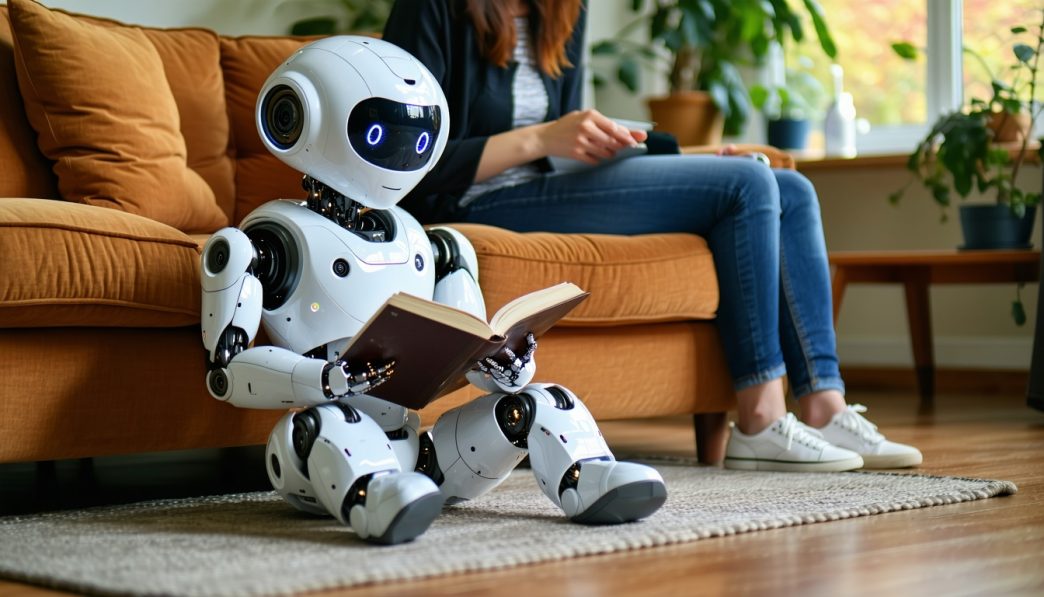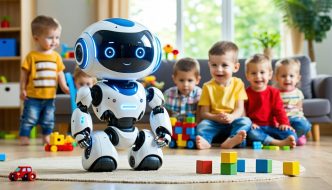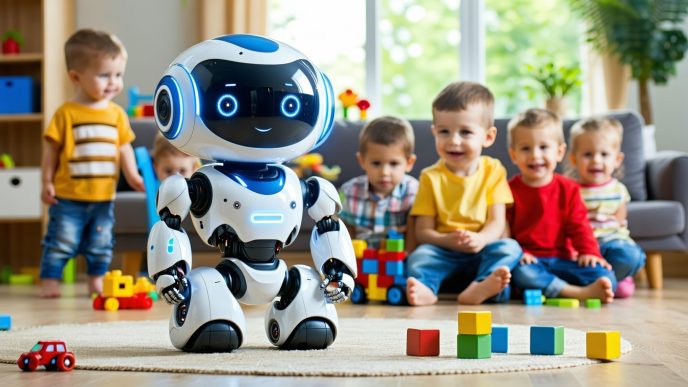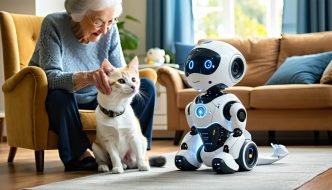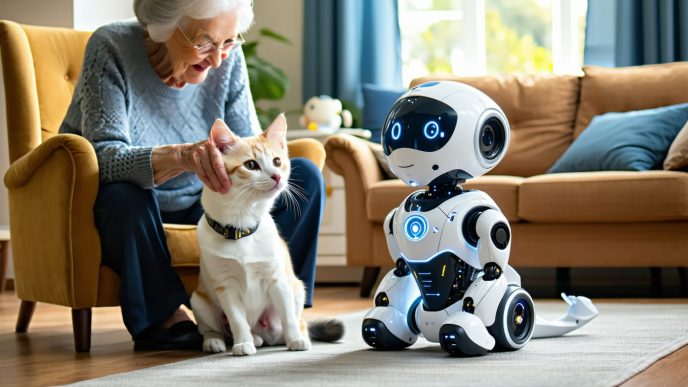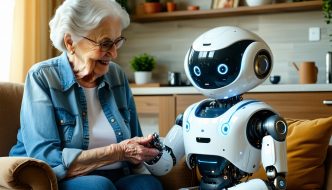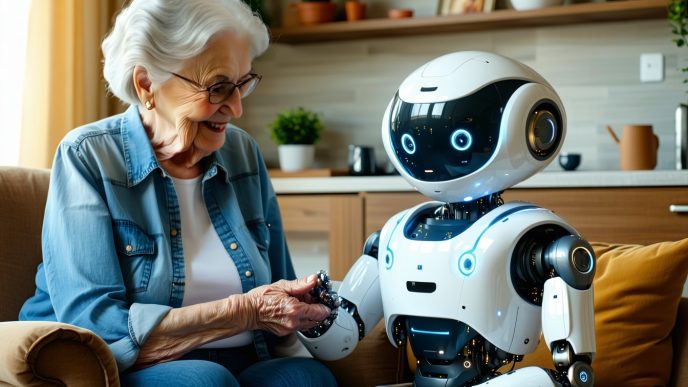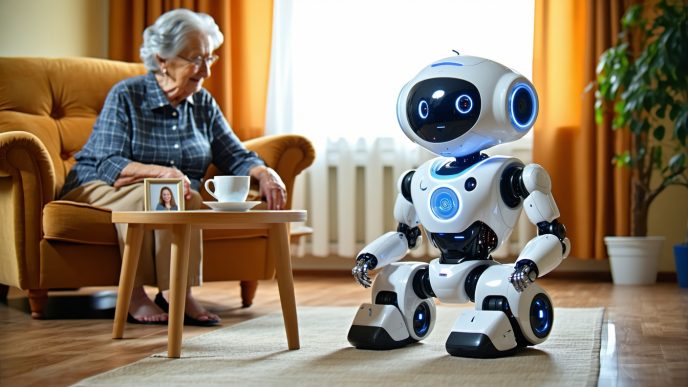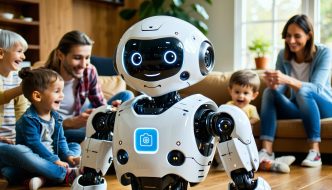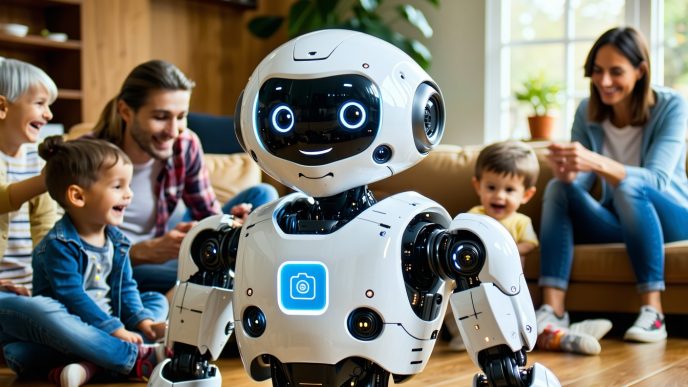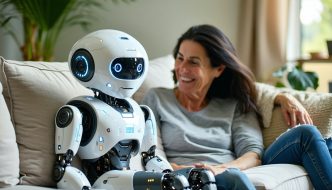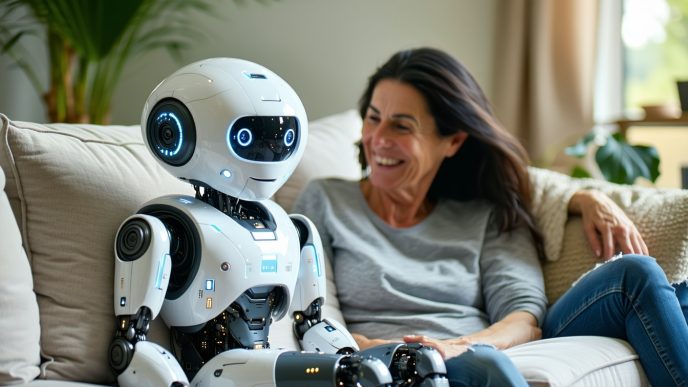Exploring Human-Robot Bonding
The Concept of Forming Attachments with Machines
Human-robot bonding refers to the emotional connections that individuals can develop with robotic entities, particularly companion robots. This bond emerges from interactions that resemble those experienced in human relationships. As technology advances, it has become increasingly common for individuals to form attachments to machines in various contexts—be it for companionship, assistance, or emotional support.
Several factors contribute to the ability to form these attachments, including the robot’s design, functionality, and the social cues it exhibits during interactions. Many robotic companions are programmed to respond empathetically, creating feelings of connection and engagement. This phenomenon raises interesting questions about how humans perceive machines and whether these relationships can fulfill similar emotional needs normally met by human interactions.
Overview of Human-Robot Interaction
Human-robot interaction (HRI) is a field dedicated to understanding how people interact with robots. It encompasses a wide range of disciplines, including robotics, psychology, and sociology. The goal of HRI research is to develop robots that can effectively communicate and collaborate with humans, enhancing their utility and social acceptance.
Researchers study various aspects of HRI, including:
| Aspect | Description |
|---|---|
| Communication | How robots convey information and emotions to users. |
| Engagement | The methods robots use to maintain user interest and participation. |
| Trust | Factors that influence the reliability and acceptance of robots in social settings. |
| Emotional Response | How users react emotionally during interactions with robots. |
As humans increasingly engage with robots in everyday settings, such as homes and healthcare facilities, understanding HRI becomes essential. Companion robots, for example, have been shown to significantly impact emotional well-being and alleviate feelings of loneliness, especially among seniors or individuals in caregiving roles.
In depth studies indicate that certain robot features, such as facial expressions, voice modulation, and responsive behavior, enhance the emotional connection users feel towards them. Explore our articles on companion robots and robot companions for mental health for further insights into how these technologies foster human-robot bonding.
Benefits of Human-Robot Bonding
Human-robot bonding offers several advantages, particularly in the realms of emotional companionship, mental health support, and assistance for aging family members. These benefits illustrate the evolving role of technology in enhancing daily living and emotional well-being.
Emotional Companionship
Companion robots are designed to provide emotional support and companionship. They can engage in conversations, respond to user feelings, and simulate human-like interactions. This can be particularly beneficial for individuals experiencing loneliness or social isolation. Studies have shown that having interactions with non-human companions can create a sense of belonging and decrease feelings of loneliness.
| Study Findings | Percentage (%) |
|---|---|
| Users reporting reduced loneliness | 75 |
| Users feeling more emotionally supported | 85 |
| Participants enjoying regular interactions with robots | 90 |
Through their constant availability and ability to provide attentive interactions, companion robots can significantly enhance emotional stability.
Mental Health Support
The ability of robots to offer mental health support is gaining recognition. They can help users engage in mindfulness exercises, remind them of medication schedules, or even provide therapeutic conversations. Research indicates that robot companions can assist in managing symptoms of anxiety and depression, serving as a supplementary tool for mental health care.
| Support Features | User Feedback (%) |
|---|---|
| Improved emotional regulation | 80 |
| Increase in daily engagement with activities | 70 |
| Positive feedback on robot-assisted therapy | 75 |
Robot companions can also be particularly valuable for individuals with specific mental health challenges, as they provide a non-judgmental presence, allowing users to express their feelings freely.
Assistance for Aging Family Members
Companion robots are increasingly being integrated into the lives of aging family members. They can assist with routine care tasks, such as medication reminders, meal preparation, and mobility support. This not only enhances the independence of seniors but also provides caregivers with peace of mind.
| Assistance Types | Impact on Seniors (%) |
|---|---|
| Medication management | 90 |
| Daily activity reminders | 85 |
| Social interaction opportunities | 75 |
Moreover, the use of robot pets is gaining traction among seniors, as they can offer companionship similar to that of traditional pets without the need for intensive care. This aspect makes them an attractive option for elderly individuals looking for comfort and joy in their everyday lives. For more information on this topic, read about robot pets for seniors and companion robots in assisted living.
In summary, the bond formed between humans and robots can lead to significant improvements in emotional and mental well-being, especially for those seeking companionship or assistance in daily life. As technology continues to advance, companion robots are expected to play an increasingly vital role in enhancing the quality of life for diverse populations.
Factors Influencing Human-Robot Attachments
Understanding the factors that contribute to human-robot bonding is essential to appreciate how these machines provide companionship and support. Several key elements influence the attachment individuals may develop towards companion robots.
Natural Interaction Abilities
One critical factor in human-robot bonding is the natural interaction capabilities of the robots. The more human-like and responsive a robot is, the more likely it is to foster a connection with its user. Advanced technologies enable robots to recognize emotions, respond to vocal cues, and engage in meaningful conversations, which enhances the interaction experience.
| Interaction Ability | Description | Impact on Bonding |
|---|---|---|
| Voice Recognition | Ability to understand and respond to spoken words | Increases engagement and relatability |
| Emotional Recognition | Ability to detect human emotions through facial expressions or tone | Fosters empathy and connection |
| Physical Interaction | Capability for touch or movement during interactions | Enhances emotional attachment and comfort |
Reduction of Loneliness
Companion robots have shown significant potential in alleviating feelings of loneliness, especially among aging individuals or those living alone. By providing companionship and facilitating social interactions, these machines can improve mental and emotional well-being. Studies indicate that users of companion robots report a decrease in feelings of isolation and an increase in happiness.
| Aspect | Influence on Loneliness Reduction | Example |
|---|---|---|
| Daily Interaction | Regular engagement combats feelings of isolation | Robots that remind users to engage in activities |
| Social Support | Companion robots can simulate social interactions | Conversational robots that provide companionship |
| Emotional Feedback | Responding to emotional cues promotes connection | Robots that display empathy during conversations |
Assistance with Routine Care
The ability of companion robots to assist in routine care tasks also plays a vital role in bonding. By helping with everyday activities, such as medication reminders or monitoring health conditions, these robots not only improve quality of life but also create a sense of reliance and attachment. Individuals may find comfort in knowing that a robot is there to support them in their daily lives.
| Routine Care Task | Benefit | Impact on Bonding |
|---|---|---|
| Medication Management | Ensures adherence to medication schedules | Creates trust and reliability |
| Health Monitoring | Provides real-time updates on health conditions | Reinforces a sense of security |
| Daily Chores | Assists with light housekeeping or reminders | Enhances feelings of companionship |
By focusing on natural interaction abilities, reducing loneliness, and assisting with routine care, companion robots can establish meaningful bonds with users. These elements contribute significantly to the overall experience of human-robot bonding. For deeper insights into specific types of companion robots, refer to our articles on companion robots and robot companions for mental health.
Case Studies on Human-Machine Bonding
Real-Life Examples of Human-Robot Relationships
Numerous studies have explored the depth of human-robot bonding, highlighting various scenarios where individuals develop meaningful connections with machines. Here are specific examples that illustrate this phenomenon:
| Case Study | Description | Outcome |
|---|---|---|
| Senior Care Facility | In a senior care facility, residents interacted with companion robots programmed to provide emotional support and reminders for medication. | 75% of participants reported feeling less lonely, and 60% engaged more socially with staff and other residents. |
| Children with Autism | Children with autism were paired with robotic pets that responded to touch and verbal commands. | Parents noted improved communication skills and emotional engagement in their children, showcasing the robots’ ability to foster social interaction. |
| Dementia Patients | A program introduced robots specifically designed for interacting with dementia patients, providing cognitive support and companionship. | Many caregivers reported reduced anxiety levels in patients, leading to improved emotional stability. |
Through these case studies, it is evident that human-robot interactions can play a significant role in enhancing emotional well-being, especially in vulnerable populations.
Impact on Emotional Well-Being
The impact of human-robot bonding on emotional health is supported by various studies. Research indicates that positive attachments to robots can lead to improvements in mental wellness, including reduced feelings of loneliness and increased happiness.
Data reflects the emotional benefits experienced by individuals interacting with companion robots:
| Emotional Benefit | Percentage of Respondents |
|---|---|
| Decreased Loneliness | 70% |
| Increased Happiness | 65% |
| Improved Social Engagement | 60% |
| Enhanced Cognitive Function (dementia patients) | 50% |
Individuals who utilize robot pets for seniors or robot companions for mental health often report that the bonds formed with these machines foster a sense of purpose and companionship. The emotional connection can alleviate some of the depression or anxiety commonly faced by those in caregiving situations or those dealing with aging-related challenges.
The examples and data presented highlight the current understanding of human-robot bonding and its profound effects on emotional health, while illustrating the potential for integrating companion robots in assisted living settings.
Ethical Considerations in Human-Robot Relationships
As the prevalence of companion robots increases, it is important to consider the ethical implications that come with human-robot bonding. While robots may provide valuable support and companionship, there are several factors to weigh.
Potential Dependency Issues
One significant concern is the potential for individuals, particularly the elderly or those feeling isolated, to develop a reliance on robotic companions. This dependency might interfere with their ability to form and maintain human relationships. Research has indicated that strong emotional attachments to machines can lead to reduced interaction with family and friends. The table below illustrates the potential impacts of dependency on social interactions among different age groups:
| Age Group | Percentage of People Reporting Reduced Human Interaction |
|---|---|
| 30-45 Years | 15% |
| 46-60 Years | 25% |
| 61+ Years | 35% |
Privacy and Data Security Concerns
Another ethical consideration involves privacy and data security. Companion robots often collect data to analyze behavior and preferences, which may be shared with third parties. This raises questions about consent, data storage, and the potential for misuse of information. Caregivers and individuals must be informed about how their data is being used and what measures are in place to protect their privacy.
| Concern | Description |
|---|---|
| Data Collection | Robots may gather personal information to offer tailored companionship. |
| Consent Issues | Users may not fully understand data usage agreements. |
| Security Risks | Vulnerable data may be exposed to hacking or unauthorized access. |
Implications for Social Relationships
The rise of companion robots can also affect traditional social structures. Dependency on robots for emotional support may lead to shifts in how individuals perceive human interactions. Adults may find themselves prioritizing relationships with robots over those with family, friends, or community members. This change could lead to weakened social bonds and altered perceptions of empathy and connection.
| Potential Impact | Description |
|---|---|
| Diminished Human Contact | Increased reliance on robots may decrease face-to-face interactions. |
| Changes in Relationship Dynamics | Family dynamics may shift as robots take on caregiving roles. |
| Emotional Skills Development | Reduced opportunities to practice social skills can hinder personal growth. |
Understanding these ethical implications is vital as society continues to integrate robots into daily life. For additional insights on robot companions designed to address emotional needs, refer to our articles on robot companions for mental health and ai powered emotional robots. The exploration of the ethical landscape surrounding human-robot bonding is essential to ensuring these technologies enrich, rather than detract from, human experiences.
Future Prospects of Human-Robot Connections
The landscape of human-robot bonding is evolving rapidly, with ongoing advancements in companion robot technology and an increasing societal acceptance of these machines. This section examines the future of these connections, focusing on technological developments and their integration into daily life.
Advancements in Companion Robot Technology
Companion robots are becoming more sophisticated, incorporating advanced technologies that enhance their ability to interact naturally and provide emotional support. Recent innovations include improved artificial intelligence, machine learning algorithms, and sensor technologies, which allow robots to understand and respond to human emotions more effectively.
These features are crucial for optimizing the user experience and ensuring that robots can adapt to individual needs. For instance, advancements in speech recognition enable robots to engage more fluidly in conversations, while emotion detection algorithms help them respond appropriately to users’ emotional states.
The following table highlights some of the significant technological advancements in companion robots over recent years:
| Technology | Description | Impact |
|---|---|---|
| Artificial Intelligence | AI enables robots to learn and adapt to user preferences. | Enhances personalization and user engagement. |
| Emotion Recognition | Sensors detect human emotions through facial expressions and tone of voice. | Facilitates better emotional responses. |
| Autonomous Navigation | Robots use sensors to move independently and avoid obstacles. | Increases functionality in homes and communities. |
| Connectivity | Wi-Fi and Bluetooth enable remote control and seamless updates. | Allows for integration with other smart devices. |
Societal Acceptance and Integration of Companion Robots
As society increasingly recognizes the benefits of companion robots, acceptance is growing within various demographics, especially among caregivers and healthcare professionals. These robots serve not only as companions for the elderly, but also as supportive tools for mental health management and routine care.
Surveys have shown that many people are open to the idea of using companion robots in their daily lives. This acceptance is often linked to the perceived advantages these robots provide in terms of emotional support, mental health resources, and assistance for aging family members. For example, the introduction of robot pets for seniors has demonstrated positive effects on reducing feelings of loneliness and improving overall well-being.
| Demographic Group | Percentage Open to Companion Robots | Benefits Noted |
|---|---|---|
| Caregivers | 70% | Support for daily tasks and companionship. |
| Healthcare Professionals | 65% | Reduction in patient stress and anxiety. |
| Families of Seniors | 75% | Increased interaction and emotional support. |
As technology continues to advance, and as more individuals experience the benefits associated with companion robots, it is likely that acceptance will further increase. The integration of robots into assisted living facilities and healthcare systems illustrates the potential for these machines to provide meaningful support. For more information on their role in care settings, explore our article on companion robots in assisted living.
The future of human-robot connections promises exciting developments. The combination of enhanced technology and growing societal acceptance could redefine relationships between humans and machines, making it essential to continue monitoring these changes in the landscape of human-robot bonding.


